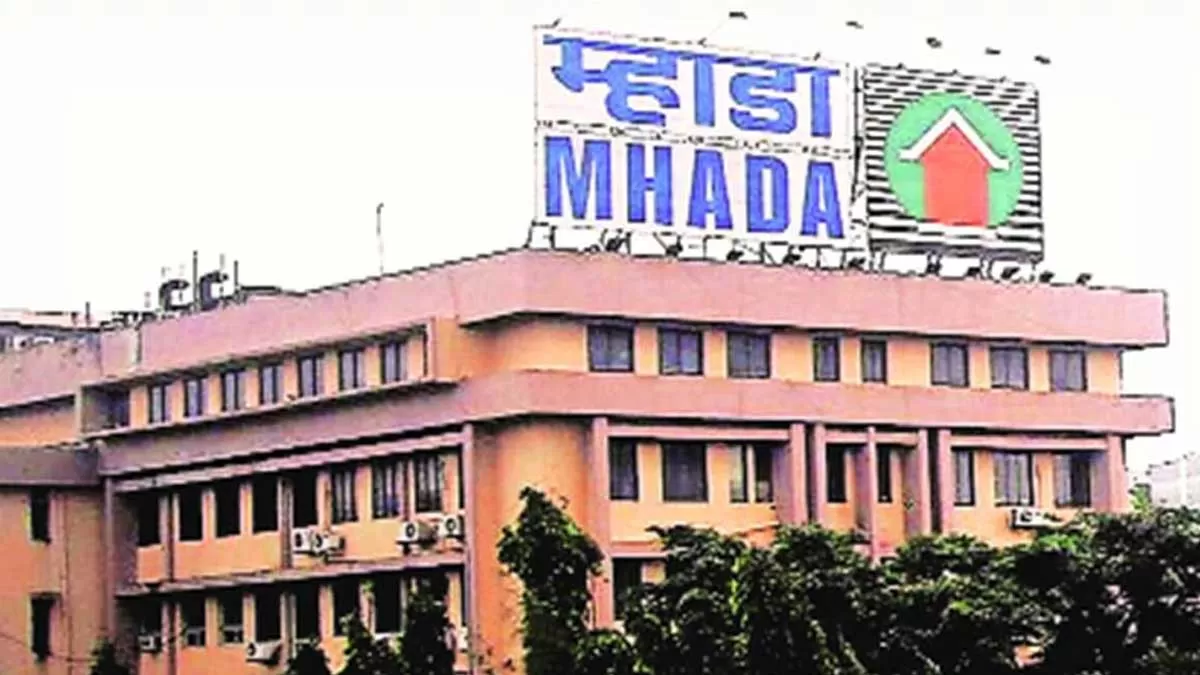A few cement companies are seen moving towards increased adoption of automation in mining technologies through in-house capacity building initiatives by their respective R&D departments, but mass-scale adoption is still a long way to go for the entire India, says Bhanu Prakash Bhatnagar, Head Mining, Adani Cement Industries Ltd.
Innovation in the mining industry is important to reduce costs as well as to meet the increasing social and environmental concerns. Pls share your thoughts on--why we need sustainable mining in the cement industry and how can we achieve this?
Yes, we agree that innovation in the mining industry is important to effective, economic, and enviro-friendly operations; these all aspects are included in the umbrella of sustainable mining.
It is fact that sustainable mining of mineral resources is a major concern for today’s global world including the cement industry, as it is the key to the security of raw materials used in the manufacturing process. To achieve sustainable development for mining, the inclusion of innovative practices during mine design, development & operation, needs to be adopted by companies, mine planners, institutions, and organisations. The cement industry should be aware that the limestone resources are non-renewable assets, and long-term sustainable mining efforts should be followed by concrete visible actions.
Mining is considered as negatively affecting the environment and causes discomfort for people living in surroundings, it should have public acceptance for its activities.
The requirement of sustainable mining
Extraction with responsibility includes better life for workmen & surrounding inhabitants
Produce with less waste
Decent work life and generation of development opportunitiesUse safer processesAccessibility of basic services such as water, sanitation, and sustainable energy to everyone
Incorporate new sustainable technologies
Promote the improved wellbeing of local communities includes converting surrounding communities to be able to produce and consume sustainably by promoting innovation and resilient infrastructure
Curb emissions, and Combating climate change and protecting the ecosystems
Improve environmental stewardship
Inequality of gender in the mining area
Promote collaboration between different social bodies to create an environment of peace and sustainable development.
Above mentioned objectives of sustainable mining practices are interrelated, and success is interlinked to each other. Following are few actionable suggestions by cement companies to effectively achieve sustainable mining of limestone, there may be many other actions which can be taken depending on their unique circumstances. These include following-
Adopting latest technologies and innovations
Improving mining processes and effective dust suppressions: These practices reduce the pollution and add to the production and thereby reduce waste also.
Switching fuel to renewable sources includes use of use of wind power, solar photovoltaics, electric vehicles, energy storage, metal recycling, hydrogen fuel cells, and carbon capture and storage etc.
Optimisation of transportation networks within mining areas.
Reducing waste, and recycling of waste
Many more innovative efforts can be added here. The best efforts of sustainable mining can be achieved by continuous exchange of experience in the field of knowledge, methods, technologies, and other solutions. It should provide a sustainable and socially acceptable development and continued operation of mining, invariably needed by people, to provide efficient and effective exploitation of limestone resources.
Innovation for advanced technology in mining is already started in India. In order to achieve resource efficiency, the Indian mining sector is already looking forward to adopting advanced mine surveying and exploration technologies (using geophysics applications using 2D & 3D seismic surveys) along with the usage of software solutions by utilising 3D software packages (including Gemcom Minex, Surpac, CAE Mining Datamine and Vulcan, etc) in the mine planning and design stage. With regards to active mining processes, resource-efficient surface drilling technologies, usage of large equipments for dumpers and excavators for improving loading and haulage, hydraulic mining by replacing handheld drills with hydraulic and jumbo drills, etc are increasingly being adopted in mining operations apart from the traditional opencast mining techniques. Furthermore, few cement companies are seen moving towards increased adoption of automation in mining technologies through in-house capacity building initiatives by their respective R&D departments.
Globally, many companies have started using electric-driven machinery. What are your thoughts on this?
It is evident that to reduce emissions, electrification, which refers to the electrification of energy end uses that have been powered by fossil fuels (natural gas, propane, gasoline, diesel, or fuel oil) is necessary. Globally, mining operations have started using electric-driven equipment. The use of Electrical driven equipment tends to be more emissions-efficient than similar diesel-powered machines. As it has advantages of -
- Electricity source is cleaner
- Less noisy
- Less maintenance
- Less exhaust noxious fumes or diesel particulate matter
- Produce less heat than diesel equivalents, reducing ventilation needs.
Mostly in mining operations, following mining machineries based on application, are used. The same includes -
Extraction: This involves drilling, blasting, or digging/loading to remove materials from the mine site i.e., transportation.
Material handling: This includes sorting and loading materials to either go to a waste area or the processing site.
Material processing: The final step involves grinding, separating, crushing, refining, and smelting mined ore or other goods at an off-site plant to turn them into finished products.
Other support equipment used in limestone mines are –
Motor graders - Motor graders ensure the roads have the necessary grading and adequate drainage. By maintaining the integrity of roads used for transporting the material around and out of the mining area, motor graders play a vital role in ensuring the efficiency of the mine’s operations. Normally for this application, electrical operated machines are not available.Wheel Loaders - For picking up and quickly moving material across a mining site for loading into trucks, nothing matches the versatility of large wheel loaders. Sizes vary from compact to large. As the wheel loader’s size increases, its bucket capacity and load handling also go up. Matching the wheel loader’s handling capabilities for both volume and density of materials at the mine is crucial to ensure the machine will hold up to the rigors of daily use without premature wear. Few wheel loaders are provided with rear electrical drums for electrical operation along with diesel operation.
Scrappers – for maintaining roads etc.
Dewatering pumps – Electrically Operated.
Maintenance equipment, etc.
Do we have the right policies for sustainable mining in India?
Yes, we do have the right regulatory environment for sustainable mining in India. The Indian mining sector is highly regulated with strong legal and regulatory mechanisms with the government introducing cum revamping several acts, policies, rules at the central and state levels (mostly based on international best practices) for ensuring sustainability in the mining sector. Limestone mining is considered a highly polluting industry causing severe environmental and social problems, India has been quite progressive in establishing institutions and regulatory frameworks to counterbalance the negative externalities caused.
New Mineral Policy 2019: The Honorable Supreme Court, in its judgment in August’17, on “rapacious” mining in various states like Odisha, Goa, and other States, observed that such mining activities have destroyed the environment and forests and badly affected the local communities and local Tribal. The Honorable Court also noted that there is no effective check on mining operations nor is there any effective mining policy to guide sustainable mining. In a critical remark on the National Mineral Policy existed that time, the Honorable Court has stated that the policy “seems to be only on paper and is not being enforced perhaps due to the involvement of very powerful vested interests or a failure of nerve” and effectively it could not deal with the challenges of the mining practices followed in India. The Honorable Court, therefore, asked the Indian government for the development of a new Policy that deals with many fundamentals of sustainable mining activities.
The major focus of the preparation of the new mineral policy 2019 was to guide the mining sector to function with utmost environmental and social responsibility, besides economic considerations. The Policy directs that mining should be environmentally sustainable and equitable, it shall ensure environmental protection, ecological conservation, and protect people’s rights in the mining areas, shall be a win-win for mining companies and investors for keeping promises towards economic considerations. The policy has a focus to ramp up mineral production massively, under the umbrella of ‘ease of doing businesses and attracting investments with benefits that sustainable mining sector development in future. The objective of this policy has been linked with transparency, better regulation and enforcement, balanced social life, and economic growth as well as sustainable mining practices for the promotion of inclusive growth of the nation. The Policy defines for effective regulation of minerals, roles of State in mineral development, prospecting and explorations, comprehensive database for mineral resources, scientific mining methods, thrust on infrastructure development, protection of the environment, sustainable development of mining sector, the welfare of project affected persons, R&R, effective mine closures, safety, mineral security, achieve with R&D activities and finally attracting foreign trade and investment for the mining sector.
It is prayed that the new Mineral Policy will address the above issue to a large extent with improvement in environmentally sustainable mining practices. Sustained education is required to prevent and control environmental degradation in mining sites. Sanctions, clearances, and penalties should also be included by the government in making laws such that offenders of the same will be punished accordingly. Forest department, environmental department, mining department, district administration can play leading roles in the facilitation process. This will help develop pragmatic Byelaws towards regulating mining activities more effectively and sustainably to improve ecology in the area.
Recently, MCDR was further amended in 2017, and the “star rating of mines” was made a mandatory requirement. It laid imposed strict penalties for non-compliance. As per the latest amendment, if any mining operation fails to adhere to scientific and efficient mining operations as mentioned in the SDF and does not achieve at least a four-star rating within a period of two years from the date of notification of these rules or two years from the date of commencement of mining operation, the MoM will suspend the license of such defaulting companies and seize their operations. The responsibility of monitoring the proper enforcement of the rules under MCDR and SDF on the IBM.
MCDR puts an obligation on the mine operators to follow the best practices prescribed for scientific mining and submit various prescribed plans, schemes, and reports to the authorised officials of IBM and in some cases, the concerned state governments. IBM scrutinises these reports and in some cases like the mining plans, schemes of mining, and mine closure plans, provides the required approvals and then monitors their implementation. Officials also undertake field inspections/studies for the enforcement of the provisions of MCDR 1988. During the inspection, IBM officials ensure that various elements of scientific mining are followed in the mine’s operations.
Environment & Forest Laws: State Governments have set up dedicated departments for controlling and regulating the mineral sector of their states. It includes the Department for Mining & Geology, Department of Forest and State Pollution Control Boards (SPCB). The mining department mainly deals with exploration, concessions grant provisions, development, and administration of mineral resources in the State. and is also a repository of state-specific mineral data.
Conclusively, for promoting environmentally and socially sustainable mining the Indian government must devise a governance mechanism that should give more impetus to develop business models based on support with technical advisory services so that they can undertake sustainable and scientific mining practices. The government is also promoting self-regulation and the adoption of ethical business practices by mining enterprises for achieving sustainable mineral development.
Do you think the Indian cement industry is on par or lag in adopting the latest mining techniques and processes?
We are at par in adopting the latest mining techniques & processes and competing well as far as key performance indicators are concerned, in comparison to any cement industry worldwide. As far as the mining associated with the Indian cement industry, there are increasing trends of technology deployment in the country’s mining sector with regards to the scope of automation in the Indian mining sector. Challenges posed by climate change concerning carbon emissions, it is important for the mining to look for technology options that are cost-efficient and environment-friendly. There is sufficient advancement in adopting the latest technologies to become self-sufficient and analysis points out that –
Mining operation has become cost effective and less labour intensive.
Utilisation of low grade limestone with given limitation on degrading quality of mineral reserves
Achieve resource efficiency
Adopting advanced mine surveying and exploration technologies (using geophysics applications using 2D and 3D seismic surveys) along with the usage of software solutions by utilising 3D software in the mine planning and design stage.
Apart from the usage of small-mining equipments, moving towards the deployment of large equipment for achieving economies of scale as it improves loading and haulage efficiency. Some mine have started using large equipments like 60 to 85 tonne dumpers (trucks used for removal of over-burden material in opencast mines) and 6 to 10 m3 shovels. These combinations are most fuel efficient also.
Furthermore, large-scale Indian mining are seen moving towards increased adoption of automation in mining technologies through in-house capacity building initiatives by their respective R&D departments.
Mining is moving towards deploying environment-friendly and energy efficient technologies and processes for enhancing their operational sustainability. Availability of fossil fuel additives, (which enhances combustion efficiency (by 6-8 per cent) and reduces fuel consumption) shows promising energy efficiency returns and is being adopted by more mining operations in India.
Few mines are also seen using technology solutions like geo-tagging of vehicles/manpower which accrues benefits such as alerts for zone violation, tracking machine health, movement of machines and materials from source to destination, monitoring mis-dumps, cycle time and perimeter breaches, etc.
With regards to this, developing affordable technologies are imperative for Indian cement companies so that it can be easily adopted by them. This would require putting more impetus to the “Make in India” program, increased government funding and subsidies (for carrying out R&D specifically in the exploration stage), effective implementation of National Minerals Exploration Policy 2019 (for increasing private sector participation in the exploration process), learning’s from domestic and international best process practices, and a conducive regulatory and legislative environment to support India’s cement sector.
Best practices that can help cement companies achieve sustainable mining goals.
Many best practices are being adopted in a big way by the cement industry. But these practices are only limited to players that have the financial capabilities to adopt advanced technological solutions and alongside have also been able to incorporate sustainable mining practices. The Limestone mining sector has untapped mineral reserves that needs optimum utilisation, it is imperative to build capacities of existing mining operations for adopting sustainable mining operations by implementing strong regulatory mechanism backed up by competent institutions having the capacity to closely oversee and monitor the mining operations. Furthermore, it is also important to take steps necessary for adopting innovative, cost-friendly, and environmentally friendly mining technologies and process throughout the entire cycle of a mining operation.
Best practices for incorporating technology upgradation in limestone mines
Adapting Hydro-static Drilling to achieve higher efficiency- Uses Hydraulic & Water for blast hole drilling.
Detailed exploration : Optimisation of number of coring boreholes based on the complexity of geology of the block and more use of geophysical loggers
Application of planning software for opencast mines like Surpac & Datamine for better utilisation of available resources.
Utilisation of Laser Survey Technology for output measurement along with presently used Theodolite technology.
Using higher capacity dumper-shovel equipment (Few Limestone mines started using 85Ts Capacity Dumpers with 10Cum bucket shovels) for better efficiency parameters, and best fuel economics.
Application of Ripper Dozer in removing OB near the villages, road etc.
Extensive use of high capacity motor – graders and vibratory road rollers and ripper dozer for establishment and maintenance of haul roads and use of cement in haul roads construction
For transportation stage, increase use of in-pit crushing and conveying System, angle conveyors including high angle conveyors, skip conveyors, tube conveyors, flexible conveyors
Deploying technological options for redesigning open cut mines to reduce haul distances and elevations & dump schedules
Taking into account the growing levels of innovations worldwide, more advanced technologies like Acid Mist Suppressants, Dust Control Systems, Electrostatic Precipitators, Scrubbers, Process Ventilation Systems and Pollution Control Systems are now available for deployment to efficiently control the alarming rise of pollutants in the environment.
Proper waste management by utilising wastes generated during the process used for road making and haul road maintenance
The excess quantity of over burden is stacked separately over non-mineralised area.
The sub grade ore is used by blending the same with richer ore to achieve mineral conservation; the excess quantity is stored separately as sub grade stack while slime from the ore washing plant is separately stored in zero discharge slime dam for possible future use
Reclamation and rehabilitation plan to be established
Recycle and reuse of process water generated from the wet beneficiation plant by provision of thickeners
Construction of rain water harvesting structures for use of rain water and augmentation of ground water table;
Construction of series of check dams across the water courses those enable retention of suspended solids and allow flow of clear water during rainy season
Stabilisation of waste dump slopes by timely vegetation with native species to prevent wash offs during rain
Waste dumps are provided with toe walls and garland drains, that arrest washed off solids from the dumps and prevents the outside water source from pollution
Oil & Grease traps in the equipment workshop provided to trap oil & grease from the workshop effluent for further reuse
Actiflo clarifier (micro sand ballasted technology) with pressure sand filter has been installed for treatment mine water to make it suitable for drinking and this filtered water is supplied to the inhabitants of the colony
Systematic multilayer disposal of dump and then rehabilitating the site by use of geo-textile mats/geo-soil savers (made from organic coconut husk) and plantation of Vetiver grass over them
The risks and the opportunities involved in sustainable mining should be considered at Company board-level, to give a systemic, long-term, and potentially dramatic impact of mining
Focus on operational transformation, investments, and innovation
Evaluate and potentially reshape mining portfolio of cement companies. Sustainable mining is to be introduces unpredictability, requiring it to be embedded in decision-making processes, such as capital allocation
Continue to engage sustainable mining through reporting, partnerships, and other proactive measures.
As such, new advanced technologies are gradually being adopted by mining associated with cement companies, but mass-scale adoption is still a long way to go for the entire India. Moreover, it is mostly the private sector entities that have progressed more in this direction as compared to the public entities. Thus, it is necessary for this industry to stop its reliance over older technologies and adopt newer technologies and processes.


















